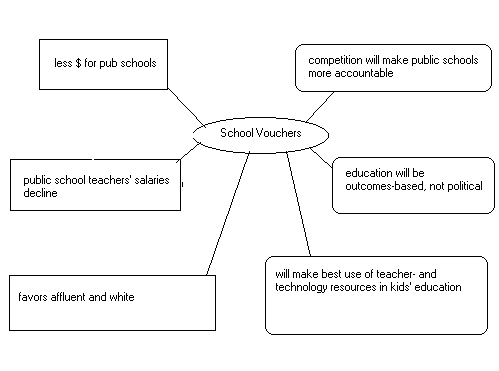
MATRICES
I. THE ASSIGNMENT
SIGNAL WORDS
| Rhetorical Task/Concept | Signal Words |
| Part/Whole | includes, overlaps, example of, same kind of..., part of, made up of, complementary to, comprised of |
| List | one, another, besides, also, furthermore, too, more, and, in addition, three things, several, many, a few |
| Time | begins, next, then, from here, soon, shortly, after, meanwhile, later, at last, finally, due, first, second |
| Comparison/Contrast | similar, like, in the same way, better, worse, faster, more slowly, but, however, nevertheless, in contrast, on the other hand, other, those, former, latter, different, |
| Cause/Effect | because, consequently, for this reason, therefore, on that account, so, hence, as a result of, so that, since, resulting in |
| Climax | finally, thus, in conclusion, in summary, to sum up, looking back, most, best, least, most important, least important, most quickly, overall |
HDWDWW
This acronym comes from Ann Berthoff, and it stands for How
Does Who
Do What
to Whom? You can use this technique
both as an invention device (generating ideas for a paper assignment) or
to clarify a passage in a rough draft. For example, a student has been
asked to write a paper on twentieth-century painters. You might start with
Who:
| WHO |
| Picasso |
| Mondrian |
| Kandinsky |
| WHO | DID WHAT |
| Picasso | broke objects down into planes |
| Mondrian | broke repesentation down into two-dimensional areas |
| Kandinsky | presented color and forms without reference to real-life objects |
| WHO | DID WHAT | WHY |
| Picasso | broke objects down into planes | to present multiple perspectives |
| Mondrian | broke representation down into two-dimensional areas | to challenge viewers through minimalist art |
| Kandinsky | presented color and forms without referene to real-life objects | to capture emotional/spiritual representations of reality |
DOUBLE-ENTRY LISTING
Most useful for comparison/contrast or argumentative papers, this method
simply lists opposing ideas in two columns. Yes, it bears a great deal
of resemblance to the HDWDWW and Matrice methods. A good way of articulating
points which need to be rebutted to strengthen an argument.
| PRO | CON |
| School curriculum can fit student needs/aptitude | Some schools will suffer financially |
| Will force greater accountability from public schools | Will favor the affluent |
| Under-performing schools will be eliminated | Has racial implications |
MAPPING
Diagramming ideas can be used as an invention strategy or to help visualize,
and then improve, the organization of a rough draft. Usually one starts
with a main idea or keyword, circles it, then jots down other keywords
or ideas. These may be connected to the original keyword, and so should
have lines drawn back to it; they may be simply connected to each other
or generate new connections. Ultimately, a writer could end up with an
elaborate tree diagram, where a main idea forms the "root" of the tree
and sub-ideas, with sub-sub-ideas, "grow" off the original keyword
or idea.

MATRICES
We mean here basically a table. This is especially useful for synthesis
(and argumentative) papers, where several authors/texts/viewpoints are
being balanced at once. Basically, the topics might be listed on the left,
in rows; the authors or institutions might be listed in columns. Here's
an example (but don't count on the veracity of these statements!):
| ISSUE | Republicans | Democrats | Third Party |
| School Voucher | Favor to add accountability to pub ed | Oppose because it undermines pub ed | Oppose because of effect on pub ed |
| Strip logging | Favor for economic dev | Oppose on federal protected land | Oppose totally as a procedure |
| Deficit | Delay paying in favor of tax cut | Pay down after SS, Medicare and small tax cut | Pay down gradually; fund social services first; no tax cut |